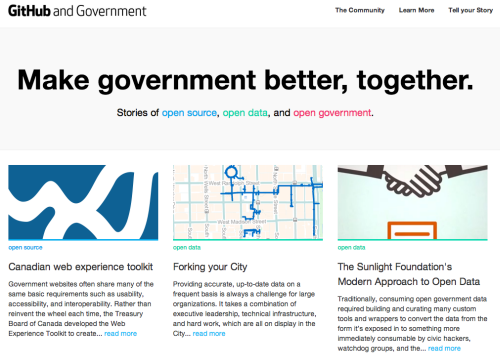GitHub launches service for open government
Future of government seems to be the topic of the moment.
After my post yesterday on Citizen sourcing and the future of cities and last week on Four fundamental principles for crowdsourcing in government, I have to report about GitHub launching government.github.com.
As it happens, in my recent keynote on A Future of Crowds: Implications for Government and Society, I discussed the issue of GitHub as a tool for crowdsourced government.
GitHub, primarily used as a tool for collaborative, distributed software development, has many other potential uses. It allows people to branch off to create variations of documents, then request the controller of the master document to incorporate their changes.
In the first instance GitHub is a fantastic way to share current legislation.
The New York Senate Open Legislation site on GitHub delivers legislative information from the senate to the public in near real-time.
The Bundes-Git service is a version control repository of German laws, and all Dutch laws are now on GitHub.
However the new GitHub for government platform enables many other possibilities as well. The government community on GitHub is large and global.
Stories include how government organizations such as the City of Chicago have used GitHub.
GitHub suggests that there are three reasons that these open data initiatives succeeded:
- Collaboration in public – When an issue arose, rather than lock such conversations to email or exclusive meetings, it was discussed openly using GitHub Issues where others could freely join the conversation, or refer to it in the future.
- Platform Agnostic – The shared tools and data where built using platform agnostic standards, standards like Markdown and YAML which are natively rendered on GitHub and could easily be incorporated elsewhere.
- Eat your own dog food – The project participants didn’t just build the tools, they began using them immediately, even well before “version 1.0”. Sunlight and GovTrack replaced their existing data scraping infrastructure with the shared tools, exposing shortcomings early on, allowing them to continuously iterate and build the project’s forward momentum.
This is just one more example of the intersection of software and the “real world”, where development methodologies are applied with great value to institutions as long-established as government.

